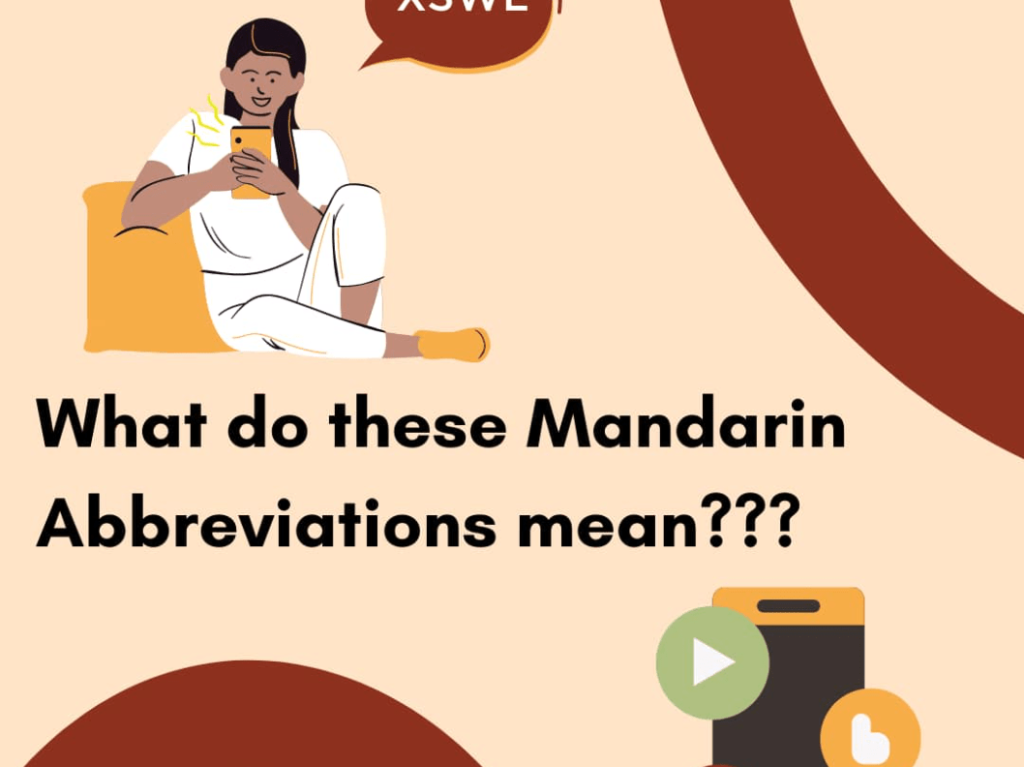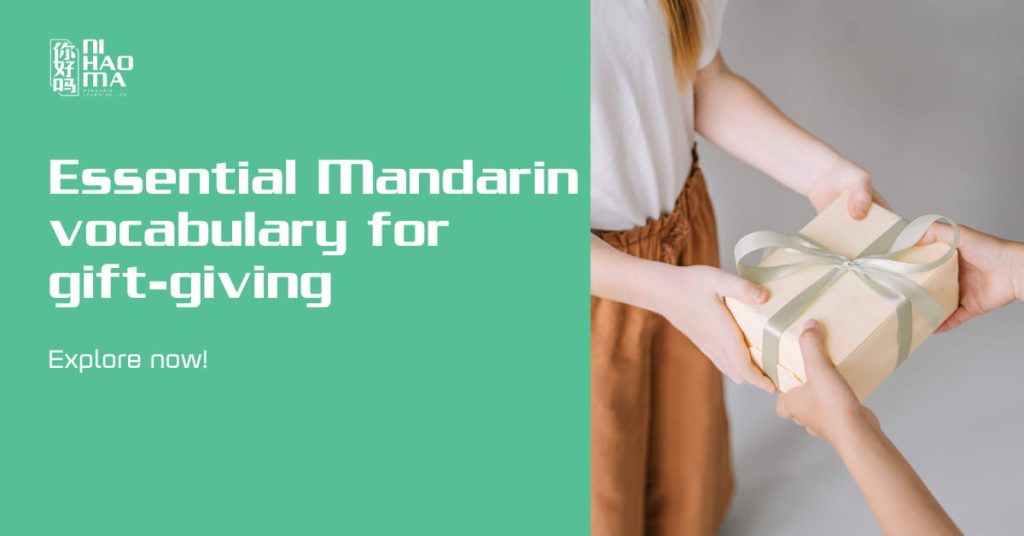Have you ever wondered how to say “rose,” “lotus,” or “chrysanthemum” in Chinese? If you’re both a flower enthusiast and a Chinese language learner, this topic will surely capture your interest. In this article, Ni Hao Ma invites you to explore the most common vocabulary for flowers in Chinese.
Names of Popular Flowers in Chinese
What is the Chinese word for plum blossom? How do you say “lotus” in Chinese? If you want to describe a flower but don’t yet know the vocabulary, this guide is for you. The topic of flowers often comes up in everyday conversations, especially when it involves giving gifts. Don’t worry — together with Ni Hao Ma, you’ll soon master the names of the most popular flowers in Chinese!
| Chinese (中文) | Pinyin | Meaning |
|---|---|---|
| 荷花 / 莲花 | héhuā / liánhuā | Lotus |
| 牡丹 | mǔdān | Peony |
| 丁香 | dīngxiāng | Lilac |
| 菊花 | júhuā | Chrysanthemum |
| 紫罗兰花 | zǐluólán huā | Violet |
| 郁金香 | yùjīnxiāng | Tulip |
| 非洲菊 | fēizhōujú | Gerbera (African Daisy) |
| 玫瑰花 | méiguī huā | Rose |
| 九重葛 | jiǔchónggé | Bougainvillea |
| 桃花 | táohuā | Peach Blossom |
| 梅花 | méihuā | Apricot blossom |
| 水仙花 | shuǐxiān huā | Narcissus |
| 玉兰花 | yùlánhuā | Magnolia |
| 海棠 | hǎitáng | Begonia |
| 麝香百合 | shèxiāng bǎihé | Lily (Oriental) |
| 兰花 | lánhuā | Orchid |
| 鸡冠花 | jīguān huā | Cockscomb |
| 山茶花 | shāncháhuā | Camellia |
| 芦苇 | lúwěi | Reed |
| 桔梗花 | jiēgěng huā | Balloon Flower |
| 藏红花 | zànghónghuā | Saffron |
| 雏菊 | chújú | Daisy |
| 黄剌玫 | huáng lá méi | Yellow Rose |
| 苜蓿 | mùxu | Alfalfa |
| 风信子 | fēng xìnzi | Hyacinth |
| 百合 | bǎihé | Lily |
| 雪花莲 | xuěhuālián | Snowdrop |
| 腊梅 | làméi | Wintersweet |
| 报春梅 | bàochūnméi | Primrose |
| 大丽花 | dàlìhuā | Dahlia |
| 夹竹桃 | jiázhútáo | Oleander |
| 茉莉 | mòlì | Jasmine |
| 紫丁香 | zǐ dīngxiāng | Purple Lilac |
| 紫藤 | zǐténg | Wisteria |
| 彼岸花 | Bǐ’ànhuā | Red Spider Lily |
| 向日葵 | xiàngrìkuí | Sunflower |
| 薰衣草 | xūnyīcǎo | Lavender |
| 杜鹃花 | dùjuānhuā | Azalea |
| 樱花 | yīnghuā | Cherry Blossom |
| 虞美人 | yúměirén | Poppy |
| 白兰花 | báilánhuā | White Orchid |
| 牵牛花 | qiānniúhuā | Morning Glory |
| 蒲公英 | púgōngyīng | Dandelion |
| 康乃馨 | kāngnǎixīn | Carnation |
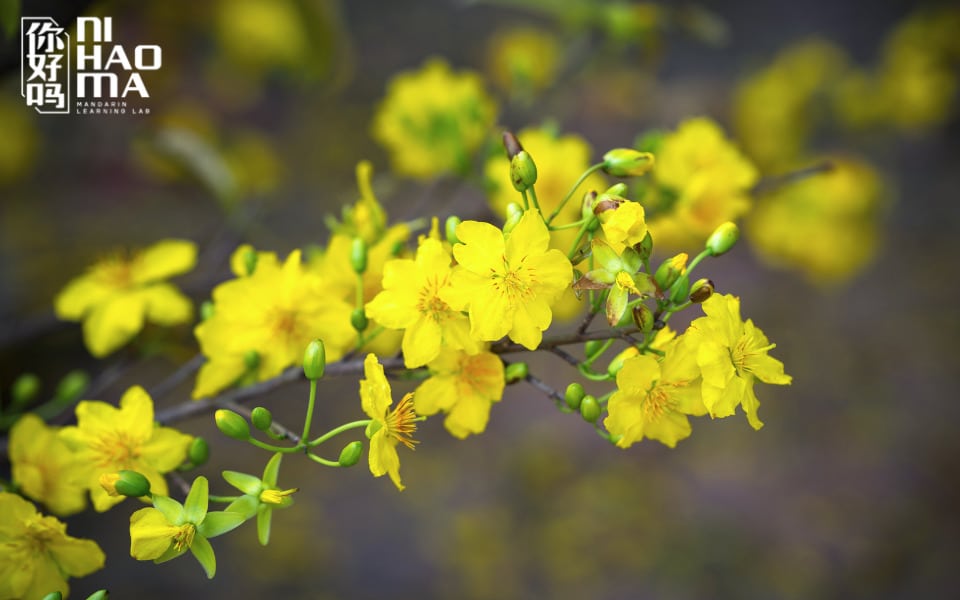
| Chinese (中文) | Pinyin | Meaning |
|---|---|---|
| 黄花菜 | huánghuācài | Daylily |
| 油菜花 | yóucàihuā | Rapeseed Flower |
| 圣诞红 | shèngdàn hóng | Poinsettia |
| 睡莲 | shuìlián | Water Lily |
| 昙花 | tánhuā | Epiphyllum (Queen of the Night) |
| 蝴蝶兰 | húdiélán | Moth Orchid |
| 喇叭花 | lǎbāhuā | Morning Glory / Trumpet Flower |
| 勿忘我 | wùwàngwǒ | Forget-Me-Not |
| 蓝铃花 | lánlínghuā | Bluebell |
| 木兰花 | mùlánhuā | Magnolia |
| 绣球花 | xiùqiúhuā | Hydrangea |
| 万寿菊 | wànshòujú | Marigold |
| 晚香玉 | wǎnxiāngyù | Tuberose |
| 芙蓉花 | fúrónghuā | Hibiscus |
| 鸢尾花 | yuānwěihuā | Iris |
| 仙人掌花 | xiānrénzhǎnghuā | Cactus Flower |
| 梨花 | líhuā | Pear Blossom |
| 茶花 | cháhuā | Camellia |
| 天竺葵 | tiānzhúkuí | Geranium |
| 凤凰花 | fènghuánghuā | Flame Tree Flower |
| 夜香花 | yèxiānghuā | Night Jasmine |
| 鸡蛋花 | jīdàn huā | Frangipani / Plumeria |
| 海棠花 | hǎitáng huā | Crabapple Flower |
| 荞麦花 | qiáomài huā | Buckwheat Flower |
| 满天星 | mǎn tiān xīng | Baby’s Breath |
| 蔷薇花 | qiángwēi huā | China Rose / Wild Rose |
See also: How to Describe Colors in Chinese
Meanings of Flowers in Chinese
In the cultures of numerous countries, flowers serve not merely as decorative elements but also embody unique symbolic meanings. Let’s explore the meanings of some popular flowers together!
| Flower (Chinese) | Meaning & Symbolism |
|---|---|
| 玫瑰 (Rose) | Love, passion, romance |
| 百合 (Lily) | Purity, nobility, family happiness |
| 康乃馨 (Carnation) | Mother’s love, respect, affection |
| 兰花 (Orchid) | Elegance, nobility, grace |
| 菊花 (Chrysanthemum) | Longevity, purity, integrity |
| 荷花 (Lotus) | Serenity, purity, overcoming hardship |
| 牡丹 (Peony) | Wealth, power, beauty |
| 向日葵 (Sunflower) | Optimism, hope, determination |
| 樱花 (Cherry Blossom) | Ephemeral beauty, youth, love |
| 紫罗兰 (Violet) | Loyalty, humility, faithfulness |
| 风信子 (Hyacinth) | Hope, romantic love |
| 茉莉花 (Jasmine) | Innocence, purity, sincere love |
| 芍药 (Dahlia/Peony) | Deep love, radiance |
| 杜鹃花 (Azalea) | Caution, care, intense emotion |
| 昙花 (Epiphyllum) | Rare beauty, fleeting moment |
| 曼陀罗 (Datura) | Mystery, allure, occasional danger |
| 石榴花 (Pomegranate Blossom) | Prosperity, fertility, many offspring |
| 桃花 (Peach Blossom) | Beauty, fate, romance |
| 李花 (Plum Blossom) | Simplicity, purity, elegance |
| 梨花 (Pear Blossom) | Innocence, gentle sorrow |
| 紫藤 (Wisteria) | Eternal love, deep attachment |
| 仙人掌花 (Cactus Flower) | Strong vitality, resilience |
| 满天星 (Baby’s Breath) | Silent love, subtlety |
| 天竺葵 (Geranium) | Peace, relaxation, blessings |
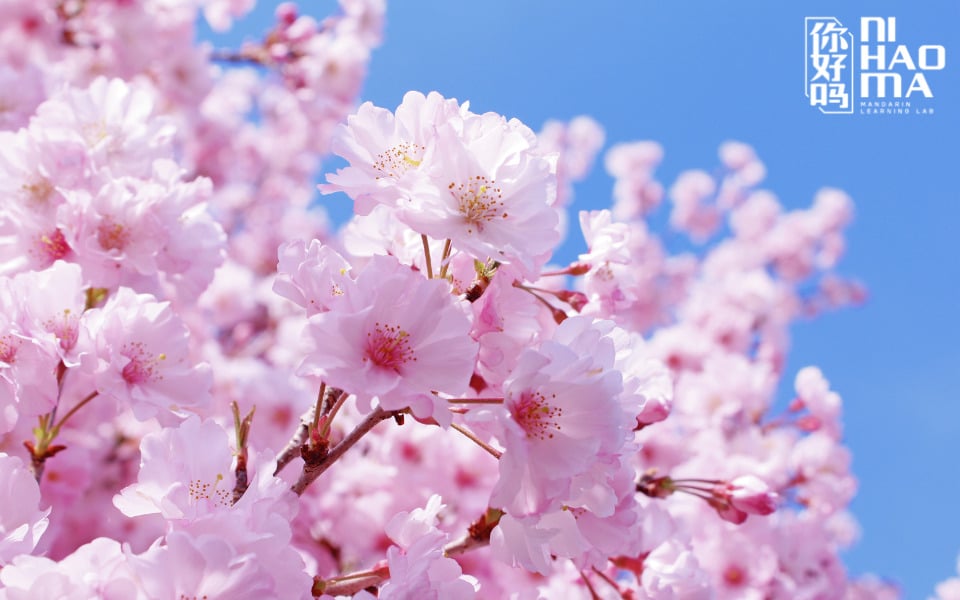
Flower In Chinese: Idioms and Expressions
Flowers are not only symbols of beauty but also vivid and poetic elements deeply rooted in Chinese language and culture. From the resilient plum blossoms blooming in the snow to the tear-streaked petals of a pear flower, Chinese people have long used the imagery of flowers to convey emotions, life philosophy, and human nature.
In classical literature, poetry, and everyday expressions, many Chinese idioms and set phrases feature flowers in Chinese, carrying rich metaphorical meanings. Below is a selection of the most well-known idioms and expressions involving flower names:
| Chinese Idiom / Phrase | Pinyin | Meaning / Interpretation |
|---|---|---|
| 明日黄花 | míng rì huáng huā | “Tomorrow’s yellow chrysanthemum” – Something outdated or irrelevant, no longer valuable or timely. |
| 昙花一现 | tán huā yī xiàn | “The epiphyllum blooms only once” – Describes something beautiful but fleeting or short-lived. |
| 梨花带雨 | lí huā dài yǔ | “Pear blossoms in the rain” – A poetic image of a beautiful woman crying, evoking fragility and sorrow. |
| 桃花运 | táo huā yùn | “Peach blossom luck” – Refers to good luck in love or having many admirers. |
| 牡丹虽好, 终须绿叶扶持 | mǔdān suī hǎo, zhōng xū lǜ yè fú chí | “Even a beautiful peony needs green leaves for support” – Even the most talented person needs support. |
| 梅开二度 | méi kāi èr dù | “Plum blossoms blooming twice” – Refers to something fortunate happening again, a second chance. |
| 红梅傲雪 | hóng méi ào xuě | “Red plum blossoms defy the snow” – Symbolizes resilience and strength in the face of hardship. |
| 杏花春雨江南 | xìng huā chūn yǔ jiāng nán | “Apricot blossoms and spring rain in Jiangnan” – Evokes the gentle, romantic scenery of southern China. |
| 红杏出墙 | hóng xìng chū qiáng | “Red apricot crossing the wall” – A euphemism for a married woman having an extramarital affair. |
| 一树梨花压海棠 | yī shù lí huā yā hǎi táng | “A pear tree pressing down on a begonia tree” – A metaphor for a romantic relationship with a large age gap, usually an older man and a younger woman. |
| 春兰秋菊 | chūn lán qiū jú | “Spring orchids and autumn chrysanthemums” – Every flower (or person) has its own beauty and strength. |
| 芙蓉出水 | fú róng chū shuǐ | “Lotus emerging from water” – Describes the pure, natural beauty of a woman without makeup. |
Dialogue Samples Using Flowers in Chinese Vocabulary
Here are three short dialogues that incorporate names of flowers in Chinese for you to practice at home:
Dialogue 1: Buying Flowers for a Friend
A: 你好,我想买一束花送给朋友。
Nǐ hǎo, wǒ xiǎng mǎi yī shù huā sòng gěi péngyǒu.
Hello, I would like to buy a bouquet of flowers for a friend.
B: 她喜欢什么花?
Tā xǐhuān shénme huā?
What kind of flowers does she like?
A: 她喜欢玫瑰和百合。
Tā xǐhuān méiguī hé bǎihé.
She likes roses and lilies.
B: 那送一束红玫瑰和白百合吧!看起来很温柔。
Nà sòng yī shù hóng méiguī hé bái bǎihé ba! Kàn qǐlái hěn wēnróu.
Then give her a bouquet of red roses and white lilies! It looks very gentle and elegant.
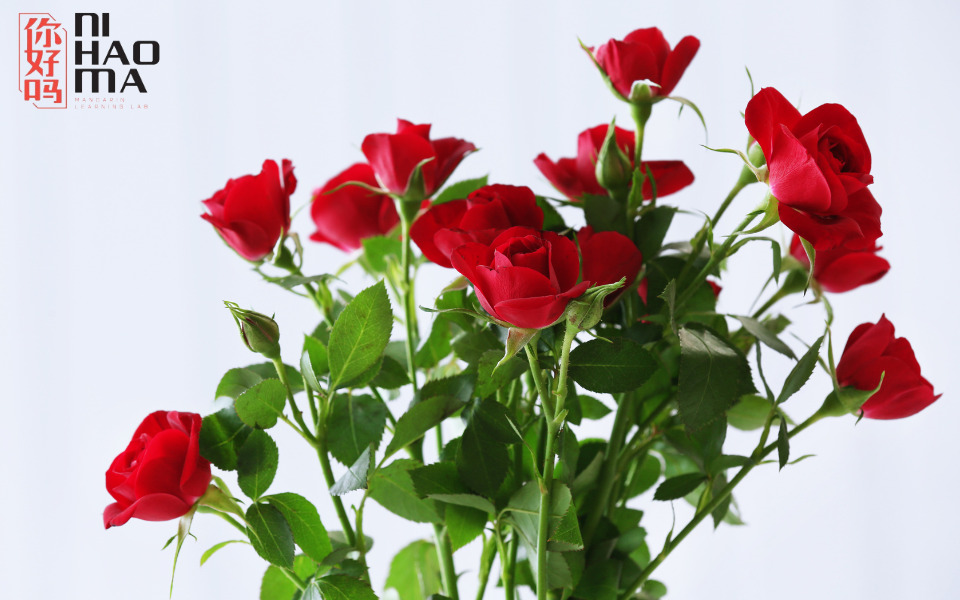
Dialogue 2: Admiring Flowers
A: 哇!这里的樱花开得真漂亮!
Wa! Zhèlǐ de yīnghuā kāi de zhēn piàoliang!
Wow! The cherry blossoms here are truly beautiful!
B: 是啊,春天来了,桃花、郁金香也开了。
Shì a, chūntiān lái le, táohuā, yùjīnxiāng yě kāi le.
Yes, spring has arrived; peach blossoms and tulips are also blooming.
A: 我最喜欢樱花,有一种浪漫的感觉。
Wǒ zuì xǐhuān yīnghuā, yǒu yì zhǒng làngmàn de gǎnjué.
I like cherry blossoms the most; they give a romantic feeling.
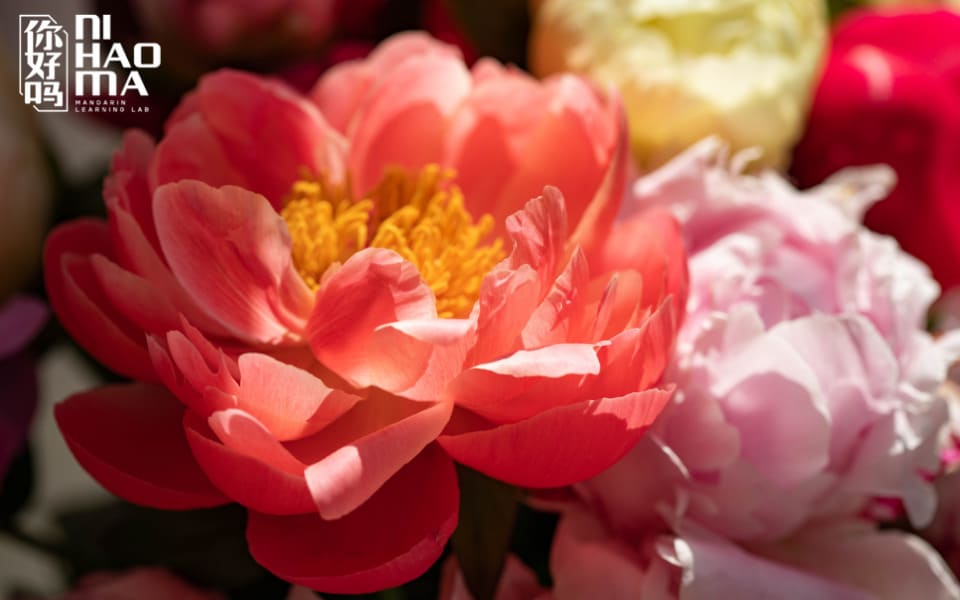
Dialogue 3: Buying Flowers for Mother
A: 母亲节快到了,你准备送妈妈什么?
Mǔqīn jié kuài dào le, nǐ zhǔnbèi sòng māma shénme?
Mother’s Day is coming soon. What are you planning to give your mom?
B: 我想送她一束花。你觉得哪种花适合妈妈?
Wǒ xiǎng sòng tā yī shù huā. Nǐ juéde nǎ zhǒng huā shìhé māma?
I want to give her a bouquet. Which flowers do you think are suitable for mom?
A: 康乃馨最常见,代表母爱,也可以考虑百合或者兰花。
Kāngnǎixīn zuì chángjiàn, dàibiǎo mǔ’ài, yě kěyǐ kǎolǜ bǎihé huòzhě lánhuā.
Carnations are the most common, symbolizing maternal love. You can also consider lilies or orchids.
B: 好主意!我看到花店有粉红色的康乃馨,看起来很温馨。
Hǎo zhǔyì! Wǒ kàndào huādiàn yǒu fěnhóngsè de kāngnǎixīn, kàn qǐlái hěn wēnxīn.
Good idea! I saw pink carnations at the flower shop; they look very warm and affectionate.
A: 妈妈一定会喜欢的。别忘了写张卡片哦!
Māma yídìng huì xǐhuān de. Bié wàngle xiě zhāng kǎpiàn o!
Mom will definitely love it. Don’t forget to write a card too!
Conclusion
Through the above dialogues, you have learned how to name some common flowers in Chinese. We hope this list of flowers in Chinese has helped you expand your vocabulary and provided interesting knowledge. Stay tuned for more exciting vocabulary topics from Ni Hao Ma!

